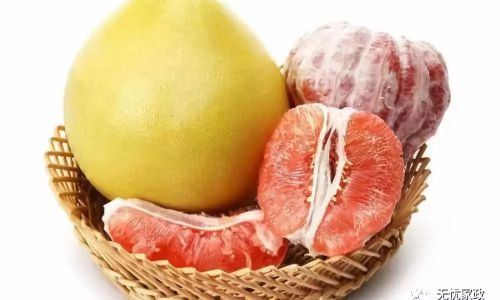Introduction
The citrus family, botanically known as Rutaceae, encompasses a diverse array of fruits that have become staples in human diets worldwide. Among these, oranges (Citrus sinensis) and grapefruits (Citrus paradisi) often spark curiosity due to their visual similarities and shared ancestry. While both fruits belong to the same genus and share certain characteristics, they exhibit distinct differences in taste, nutritional composition, culinary applications, and cultural significance. This article delves into the nuances that set oranges and grapefruits apart, exploring their botanical origins, physical attributes, flavor profiles, and roles in health and cuisine. By dissecting these aspects, we aim to clarify whether these citrus fruits are interchangeable or uniquely valuable in their own right.
Botanical Classification and Origins
Oranges and grapefruits are both members of the Citrus genus, which includes lemons, limes, tangerines, and pomelos. However, their taxonomic classifications diverge at the species level. Oranges are classified as Citrus sinensis, a name derived from their origins in China, where they were cultivated over 3,000 years ago. Grapefruits, on the other hand, are scientifically termed Citrus paradisi, a nod to their “paradisiacal” flavor and their relatively recent emergence in the 18th century.

The story of the grapefruit’s origin is a fascinating example of natural hybridization. Botanists believe grapefruits arose from a chance cross between the pomelo (Citrus maxima) and the sweet orange. This union likely occurred in Barbados, where European explorers documented the fruit’s existence in the 1750s. Oranges, by contrast, have a longer history of cultivation, with evidence of their use in ancient Chinese medicine and trade along the Silk Road.
Physical Characteristics: Size, Shape, and Appearance
At first glance, oranges and grapefruits may seem alike, but closer inspection reveals notable differences. Grapefruits are generally larger, with diameters ranging from 4 to 6 inches, compared to oranges’ 2.5 to 4 inches. Their shapes also vary: oranges tend to be perfectly round, while grapefruits often exhibit a slightly oblate or flattened form.
The skin of an orange is typically thinner and smoother, ranging in color from bright orange to deep reddish-orange. Grapefruit rinds are thicker and coarser, with hues that span from pale yellow to pink or ruby red, depending on the variety. The thickness of a grapefruit’s peel serves as a protective layer, extending its shelf life compared to oranges.
Internally, the segments (known as carpels) of both fruits are enclosed in a white, pithy membrane. However, grapefruit segments are larger and more tightly packed, often adhering to a central membrane that can make them slightly harder to separate. Oranges, in contrast, have smaller, juicier segments that detach more easily. Seed count also varies: while seedless orange varieties are common, grapefruits frequently contain a moderate number of white, crescent-shaped seeds.
Flavor Profiles: Sweetness vs. Bitterness
The taste difference between oranges and grapefruits is perhaps their most distinguishing feature. Oranges are renowned for their bright, sweet flavor with a balanced acidity, making them a universally appealing snack. Their sugar content typically ranges from 8% to 12%, with varieties like Valencia oranges leaning slightly tangier and blood oranges offering a berry-like undertone.
Grapefruits, by comparison, present a complex flavor profile that combines sweetness, tartness, and a characteristic bitterness. This bitterness stems from compounds like naringin and limonin, which are more concentrated in grapefruits than in oranges. The intensity of these flavors varies by variety: white grapefruits are often sharper and more acidic, while pink or ruby red grapefruits balance bitterness with a hint of sweetness.
The pH levels of the two fruits also differ. Oranges generally have a pH between 3.3 and 4.2, while grapefruits range from 2.9 to 3.3, making them slightly more acidic. This acidity contributes to grapefruit’s refreshing zing but can also make it polarizing among those sensitive to tart flavors.
Nutritional Composition: Vitamins, Minerals, and Calories
Both fruits are celebrated as nutrient-dense powerhouses, but their nutritional profiles cater to different dietary needs. A medium orange (131 grams) provides approximately 62 calories, 12 grams of sugar, and 3 grams of dietary fiber. It is an excellent source of vitamin C, offering 70% of the recommended daily intake (RDI), along with folate, potassium, and thiamine.

Grapefruits, while slightly larger, contain about 52 calories per half-fruit (123 grams), with 8 grams of sugar and 2 grams of fiber. They are particularly rich in vitamin A, providing 28% of the RDI, and exceed oranges in vitamin C content, with 92% of the RDI per serving. Grapefruits also contain lycopene, a carotenoid antioxidant linked to heart health and cancer prevention, particularly in red-fleshed varieties.
The glycemic index (GI) of these fruits further highlights their differences. Oranges have a GI of 43, while grapefruits rank lower at 25, making grapefruits a preferable choice for individuals managing blood sugar levels. However, grapefruits interact with certain medications, including statins and antihistamines, due to compounds that inhibit cytochrome P450 enzymes in the liver. This interaction can elevate drug concentrations in the bloodstream, a critical consideration for medical patients.
Culinary Applications: From Breakfast to Gourmet Dishes
Oranges and grapefruits occupy distinct niches in the culinary world. Oranges’ sweetness and juiciness make them ideal for fresh consumption, juicing, and desserts. They are central to recipes like orange cakes, marmalades, and salads, while their zest adds aromatic complexity to marinades and baked goods. Blood oranges, with their deep hue, are prized for garnishes and cocktails like the Negroni.
Grapefruits, with their bold flavor, are often enjoyed in savory dishes. A classic example is the grapefruit and avocado salad, where the fruit’s acidity cuts through the creaminess of the avocado. Broiled grapefruit halves, sprinkled with brown sugar and cinnamon, are a popular breakfast treat. In savory contexts, grapefruit segments pair well with seafood, particularly shrimp and scallops, or in ceviche preparations.
The bitterness of grapefruits also lends itself to beverages like the Greyhound cocktail (vodka and grapefruit juice) or the Paloma, a Mexican staple made with tequila. Conversely, orange juice is a ubiquitous mixer in cocktails, mocktails, and smoothies.
Health Benefits: Beyond Vitamin C
While both fruits bolster immune function and skin health through their vitamin C content, their unique phytochemicals offer additional advantages. Oranges are rich in hesperidin, a flavonoid linked to improved blood circulation and reduced inflammation. Studies suggest that regular orange consumption may lower the risk of chronic diseases like heart disease and certain cancers.
Grapefruits, meanwhile, have garnered attention for their potential role in weight management. A 2006 study published in the Journal of Medicinal Food found that participants who consumed half a grapefruit before meals experienced greater weight loss than those who did not. This effect may stem from grapefruit’s ability to regulate insulin levels and enhance metabolic efficiency.
However, grapefruit’s interaction with medications remains a caveat. Patients on calcium channel blockers, benzodiazepines, or immunosuppressants should consult healthcare providers before incorporating grapefruit into their diet.

Cultivation and Environmental Impact
Oranges and grapefruits thrive in subtropical climates, with major producing regions including Florida, California, Brazil, and China. Oranges are more cold-tolerant than grapefruits, allowing them to grow in slightly cooler areas. Both crops require well-drained soil and ample sunlight, though grapefruits demand more consistent moisture to prevent fruit splitting.
Pest and disease management differ between the two. Oranges are susceptible to citrus greening disease, a bacterial infection spread by psyllids, which has devastated groves in Florida. Grapefruits face challenges from fungal pathogens like Phytophthora and require careful irrigation practices to avoid root rot.
Sustainable cultivation practices, such as integrated pest management and drip irrigation, are critical for both crops. Oranges, due to their economic dominance, have seen more investment in disease-resistant varieties, while grapefruit growers often focus on improving soil health to mitigate fungal risks.
Cultural Symbolism and Historical Uses
Oranges have long symbolized prosperity and fertility in cultures worldwide. In Chinese New Year celebrations, the fruit is exchanged as a gesture of good fortune, while in Western Christianity, oranges tucked into stockings recall St. Nicholas’s generosity. Orange blossoms are traditional wedding symbols in Mediterranean cultures, representing purity and eternal love.
Grapefruits, despite their shorter history, have carved their own cultural niche. In 19th-century America, grapefruit became a breakfast staple among health-conscious elites, popularized by figures like Kimball Atwood, who marketed it as the “forbidden fruit” of Barbados. Today, grapefruit festivals in Texas and Florida celebrate the fruit’s role in regional agriculture.
Conclusion: Celebrating Diversity in the Citrus Family
In summary, while oranges and grapefruits share botanical ties and citrus heritage, they are distinct entities with unique attributes. Oranges captivate with their sweetness, versatility, and global cultural significance, while grapefruits challenge palates with their bittersweet complexity and nutritional edge. Understanding these differences empowers consumers and chefs alike to appreciate each fruit’s strengths, whether in a refreshing juice, a zesty salad, or a medicinal elixir.
The next time you encounter these citrus gems, take a moment to savor their individuality. The orange’s jubilant sweetness and the grapefruit’s audacious tang remind us that even within the same family, diversity enriches our culinary and sensory experiences. As we continue to explore the vast world of citrus fruits, one thing remains clear: neither orange nor grapefruit is merely a fruit—they are testaments to nature’s ingenuity and humanity’s enduring fascination with flavor.






0 comments